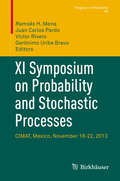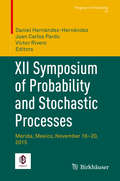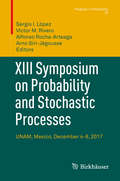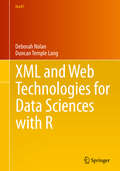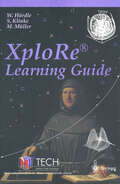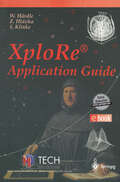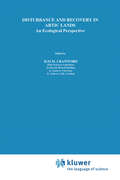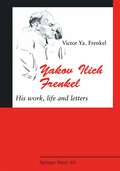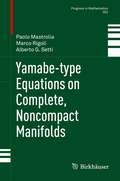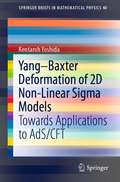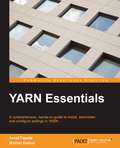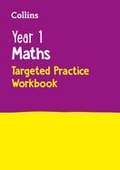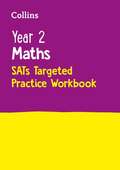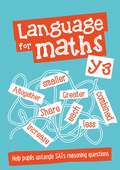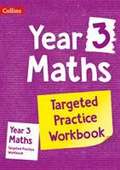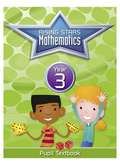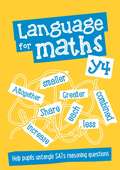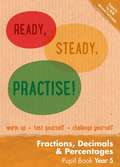- Table View
- List View
xGenius: Expected Goals and the Science of Winning Football Matches
by James Tippett'Eye-opening. An essential read for any football fan' – Jamie CarragherA new, expanded and super-charged guide to Expected Goals (xG) analysis from the bestselling author of The Expected Goals Philosophy.The concept of Expected Goals – or xG – has changed how we understand football. Every fan will have heard of xG, many will understand what it is, but few will know exactly how it's being used by football teams to improve their chances of winning matches.xGenius explores the interplay between analysis, tactics, and decision-making. It seeks to put the sport of football under the microscope with the aim of getting closer to the ultimate truth of what makes players, managers and teams successful. What, ultimately, wins football matches.Packed with examples from the Premier League and beyond, xGenius shows how xG and other performance analysis tools are helping answer previously unanswerable questions. Were Brighton the unluckiest team in recent history? What is 'The Timo Werner Paradox'? How many titles did Liverpool deserve to win under Jürgen Klopp? Is Son Heung-Min the greatest finisher in the modern era? xGenius demonstrates how clubs and coaches are using data as a major tool to improve performances on the pitch. It reveals how xG helped Brighton and Brentford transform themselves into established Premier League clubs, and how such analysis was integral to Liverpool and Arsenal's renaissance in recent years.As teams have realised the importance of amassing high xG numbers, the average shot distances in Europe's major leagues have plummeted, dead ball situations have become ever more important, and players who are able to accumulate large xG volumes have become increasingly valuable. Clubs have developed new systems, formations and strategies as they strive for 'big chance creation'.xGenius shows how top-level football analysis is being carried out by the very best in the business. The insights explored in this book will change the way you watch football.
xGenius: Expected Goals and the Science of Winning Football Matches
by James Tippett'Eye-opening. An essential read for any football fan' – Jamie CarragherA new, expanded and super-charged guide to Expected Goals (xG) analysis from the bestselling author of The Expected Goals Philosophy.The concept of Expected Goals – or xG – has changed how we understand football. Every fan will have heard of xG, many will understand what it is, but few will know exactly how it's being used by football teams to improve their chances of winning matches.xGenius explores the interplay between analysis, tactics, and decision-making. It seeks to put the sport of football under the microscope with the aim of getting closer to the ultimate truth of what makes players, managers and teams successful. What, ultimately, wins football matches.Packed with examples from the Premier League and beyond, xGenius shows how xG and other performance analysis tools are helping answer previously unanswerable questions. Were Brighton the unluckiest team in recent history? What is 'The Timo Werner Paradox'? How many titles did Liverpool deserve to win under Jürgen Klopp? Is Son Heung-Min the greatest finisher in the modern era? xGenius demonstrates how clubs and coaches are using data as a major tool to improve performances on the pitch. It reveals how xG helped Brighton and Brentford transform themselves into established Premier League clubs, and how such analysis was integral to Liverpool and Arsenal's renaissance in recent years.As teams have realised the importance of amassing high xG numbers, the average shot distances in Europe's major leagues have plummeted, dead ball situations have become ever more important, and players who are able to accumulate large xG volumes have become increasingly valuable. Clubs have developed new systems, formations and strategies as they strive for 'big chance creation'.xGenius shows how top-level football analysis is being carried out by the very best in the business. The insights explored in this book will change the way you watch football.
XI Symposium on Probability and Stochastic Processes: CIMAT, Mexico, November 18-22, 2013 (Progress in Probability #69)
by Ramsés H. Mena Juan Carlos Pardo Víctor Rivero Gerónimo Uribe BravoThis volume features a collection of contributed articles and lecture notes from the XI Symposium on Probability and Stochastic Processes, held at CIMAT Mexico in September 2013. Since the symposium was part of the activities organized in Mexico to celebrate the International Year of Statistics, the program included topics from the interface between statistics and stochastic processes.
XII Symposium of Probability and Stochastic Processes: Merida, Mexico, November 16–20, 2015 (Progress in Probability #73)
by Daniel Hernández-Hernández Juan Carlos Pardo Victor RiveroThis volume contains the proceedings of the XII Symposium of Probability and Stochastic Processes which took place at Universidad Autonoma de Yucatan in Merida, Mexico, on November 16–20, 2015. This meeting was the twelfth meeting in a series of ongoing biannual meetings aimed at showcasing the research of Mexican probabilists as well as promote new collaborations between the participants.The book features articles drawn from different research areas in probability and stochastic processes, such as: risk theory, limit theorems, stochastic partial differential equations, random trees, stochastic differential games, stochastic control, and coalescence. Two of the main manuscripts survey recent developments on stochastic control and scaling limits of Markov-branching trees, written by Kazutoshi Yamasaki and Bénédicte Haas, respectively. The research-oriented manuscripts provide new advances in active research fields in Mexico.The wide selection of topics makes the book accessible to advanced graduate students and researchers in probability and stochastic processes.
XIII Symposium on Probability and Stochastic Processes: UNAM, Mexico, December 4-8, 2017 (Progress in Probability #75)
by Sergio I. López Víctor M. Rivero Alfonso Rocha-Arteaga Arno Siri-JégousseThis volume features a collection of contributed articles and lecture notes from the XIII Symposium on Probability and Stochastic Processes, held at UNAM, Mexico, in December 2017.It is split into two main parts: the first one presents lecture notes of the course provided by Mauricio Duarte, followed by its second part which contains research contributions of some of the participants.
XML and Web Technologies for Data Sciences with R (Use R!)
by Deborah Nolan Duncan Temple LangWeb technologies are increasingly relevant to scientists working with data, for both accessing data and creating rich dynamic and interactive displays. The XML and JSON data formats are widely used in Web services, regular Web pages and JavaScript code, and visualization formats such as SVG and KML for Google Earth and Google Maps. In addition, scientists use HTTP and other network protocols to scrape data from Web pages, access REST and SOAP Web Services, and interact with NoSQL databases and text search applications. This book provides a practical hands-on introduction to these technologies, including high-level functions the authors have developed for data scientists. It describes strategies and approaches for extracting data from HTML, XML, and JSON formats and how to programmatically access data from the Web. Along with these general skills, the authors illustrate several applications that are relevant to data scientists, such as reading and writing spreadsheet documents both locally and via Google Docs, creating interactive and dynamic visualizations, displaying spatial-temporal displays with Google Earth, and generating code from descriptions of data structures to read and write data. These topics demonstrate the rich possibilities and opportunities to do new things with these modern technologies. The book contains many examples and case-studies that readers can use directly and adapt to their own work. The authors have focused on the integration of these technologies with the R statistical computing environment. However, the ideas and skills presented here are more general, and statisticians who use other computing environments will also find them relevant to their work.Deborah Nolan is Professor of Statistics at University of California, Berkeley.Duncan Temple Lang is Associate Professor of Statistics at University of California, Davis and has been a member of both the S and R development teams.
XploRe — Learning Guide: Learning Guide
by W. Härdle S. Klinke M. MüllerIt is generally accepted that training in statistics must include some exposure to the mechanics of computational statistics. This learning guide is intended for beginners in computer-aided statistical data analysis. The prerequisites for XploRe - the statistical computing environment - are an introductory course in statistics or mathematics. The reader of this book should be familiar with basic elements of matrix algebra and the use of HTML browsers. This guide is designed to help students to XploRe their data, to learn (via data interaction) about statistical methods and to disseminate their findings via the HTML outlet. The XploRe APSS (Auto Pilot Support System) is a powerful tool for finding the appropriate statistical technique (quantlet) for the data under analysis. Homogeneous quantlets are combined in XploRe into quantlibs. The XploRe language is intuitive and users with prior experience of other sta tistical programs will find it easy to reproduce the examples explained in this guide. The quantlets in this guide are available on the CD-ROM as well as on the Internet. The statistical operations that the student is guided into range from basic one-dimensional data analysis to more complicated tasks such as time series analysis, multivariate graphics construction, microeconometrics, panel data analysis, etc. The guide starts with a simple data analysis of pullover sales data, then in troduces graphics. The graphics are interactive and cover a wide range of dis plays of statistical data.
XploRe® - Application Guide
by W. Härdle Z. Hlavka S. KlinkeThis book offers a detailed application guide to XploRe - an interactive statistical computing environment. As a guide it contains case studies of real data analysis situations. It helps the beginner in statistical data analysis to learn how XploRe works in real life applications. Many examples from practice are discussed and analysed in full length. Great emphasis is put on a graphic based understanding of the data interrelations. The case studies include: Survival modelling with Cox's proportional hazard regression, Vitamin C data analysis with Quantile Regression, and many others.
XploRe: An Interactive Statistical Computing Environment (Statistics and Computing)
by Wolfgang Härdle Sigbert Klinke Berwin A. TurlachThis book describes an interactive statistical computing environment called 1 XploRe. As the name suggests, support for exploratory statistical analysis is given by a variety of computational tools. XploRe is a matrix-oriented statistical language with a comprehensive set of basic statistical operations that provides highly interactive graphics, as well as a programming environ ment for user-written macros; it offers hard-wired smoothing procedures for effective high-dimensional data analysis. Its highly dynamic graphic capa bilities make it possible to construct student-level front ends for teaching basic elements of statistics. Hot keys make it an easy-to-use computing environment for statistical analysis. The primary objective of this book is to show how the XploRe system can be used as an effective computing environment for a large number of statistical tasks. The computing tasks we consider range from basic data matrix manipulations to interactive customizing of graphs and dynamic fit ting of high-dimensional statistical models. The XploRe language is similar to other statistical languages and offers an interactive help system that can be extended to user-written algorithms. The language is intuitive and read ers with access to other systems can, without major difficulty, reproduce the examples presented here and use them as a basis for further investigation.
Y equals X over 1 and Y equals 3 plus X cubed (tactile)
by Sheffield Vi ServiceThis is a two-page document. On page one there is a graph of the equation y = x over 1. And on page two there is a graph of the equation y = 3 + x cubed. On each graph the x-axis runs horizontally across the centre of the page and the y-axis goes vertically up the centre of the page.
Yakov Ilich Frenkel
by Victor Ya. FrenkelAn in-depth survey of the genesis and ramifications of Yakov Frenkel’s scientific achievements. Special attention is paid to Frenkel’s civic convictions and numerous other topics. The book contains a wealth of archival documents and is richly illustrated with photos and drawings.
Yamabe-type Equations on Complete, Noncompact Manifolds (Progress in Mathematics #302)
by Paolo Mastrolia Marco Rigoli Alberto G SettiThe aim of this monograph is to present a self-contained introduction to some geometric and analytic aspects of the Yamabe problem. The book also describes a wide range of methods and techniques that can be successfully applied to nonlinear differential equations in particularly challenging situations. Such situations occur where the lack of compactness, symmetry and homogeneity prevents the use of more standard tools typically used in compact situations or for the Euclidean setting. The work is written in an easy style that makes it accessible even to non-specialists.After a self-contained treatment of the geometric tools used in the book, readers are introduced to the main subject by means of a concise but clear study of some aspects of the Yamabe problem on compact manifolds. This study provides the motivation and geometrical feeling for the subsequent part of the work. In the main body of the book, it is shown how the geometry and the analysis of nonlinear partial differential equations blend together to give up-to-date results on existence, nonexistence, uniqueness and a priori estimates for solutions of general Yamabe-type equations and inequalities on complete, non-compact Riemannian manifolds.
Yang–Baxter Deformation of 2D Non-Linear Sigma Models: Towards Applications to AdS/CFT (SpringerBriefs in Mathematical Physics #40)
by Kentaroh YoshidaIn mathematical physics, one of the fascinating issues is the study of integrable systems. In particular, non-perturbative techniques that have been developed have triggered significant insight for real physics. There are basically two notions of integrability: classical integrability and quantum integrability. In this book, the focus is on the former, classical integrability. When the system has a finite number of degrees of freedom, it has been well captured by the Arnold–Liouville theorem. However, when the number of degrees of freedom is infinite, as in classical field theories, the integrable structure is enriched profoundly. In fact, the study of classically integrable field theories has a long history and various kinds of techniques, including the classical inverse scattering method, which have been developed so far. In previously published books, these techniques have been collected and well described and are easy to find in traditional, standard textbooks. One of the intriguing subjects in classically integrable systems is the investigation of deformations preserving integrability. Usually, it is not considered systematic to perform such a deformation, and one must study systems case by case and show the integrability of the deformed systems by constructing the associated Lax pair or action-angle variables. Recently, a new, systematic method to perform integrable deformations of 2D non-linear sigma models was developed. It was invented by C. Klimcik in 2002, and the integrability of the deformed sigma models was shown in 2008. The original work was done for 2D principal chiral models, but it has been generalized in various directions nowadays. In this book, the recent progress on this Yang–Baxter deformation is described in a pedagogical manner, including some simple examples. Applications of Yang–Baxter deformation to string theory are also described briefly.
YARN Essentials
by Amol Fasale Nirmal KumarIf you have a working knowledge of Hadoop 1.x but want to start afresh with YARN, this book is ideal for you. You will be able to install and administer a YARN cluster and also discover the configuration settings to fine-tune your cluster both in terms of performance and scalability. This book will help you develop, deploy, and run multiple applications/frameworks on the same shared YARN cluster.
Year 1 Maths Targeted Practice Workbook (PDF)
by Collins Collins Ks1When it comes to getting the best results, practice really does make perfect! Matched to the National Curriculum, this Collins Maths Year 1 workbook is designed to target every Maths Year 1 topic in depth. Using a repeated practice method that is proven to work, this book improves performance in school, as well as in tests and assessments. Questions for each topic are organised into three levels of increasing difficulty while progress tests throughout check children’s understanding along the way. Children can record their own results too, supporting awareness and boosting confidence. A handy pull-out answer section is also included to ensure every child can succeed in Year 1.
Year 2 Maths Sats Targeted Practice Workbook: For The 2021 Tests (PDF)
by Collins Uk Staff Collins Ks1 StaffWhen it comes to getting the best results, practice really does make perfect! Matched to the National Curriculum, this Collins Maths Year 2 workbook is designed to target every Maths Year 2 topic in depth. Using a repeated practice method that is proven to work, this book improves performance in tests and assessments. Questions for each topic are organised into three levels of increasing difficulty while progress tests throughout check children’s understanding along the way. Children can record their own results too, supporting awareness and boosting confidence.
Year 3 Language For Maths (PDF)
by Keen Kite Keen Kite BooksHelp children untangle the language of SATs reasoning questions – though collaborative activities and guidance on vocab. Perfect for EAL and any children who require additional language support. Help children untangle the language of reasoning questions.
Year 3 Maths Targeted Practice Workbook (PDF)
by Collins Collins Ks2When it comes to getting the best results, practice really does make perfect! Matched to the National Curriculum, this Collins Maths Year 3 workbook is designed to target every Maths Year 3 topic in depth. Using a repeated practice method that is proven to work, this book improves performance in school, as well as in tests and assessments. Questions for each topic are organised into three levels of increasing difficulty while progress tests throughout check children’s understanding along the way. Children can record their own results too, supporting awareness and boosting confidence. A handy pull-out answer section is also included to ensure every child can succeed in Year 3.
Year 3 Textbook (PDF)
by Caroline Clissold Heather Davis Linda Glithro Steph King Belle CottinghamThe full-colour, engaging Textbook for Year 3 is designed to aid high-quality teaching and learning. Characters introduce and discuss a common misconception for each concept, supported by visual representations. A set of practice activities is provided per concept, offering bare practice, through to practice in context and then open-ended investigation, to build conceptual understanding. This textbook has been written and reviewed by mathematics experts with extensive classroom experience.
Year 4 Language For Maths (PDF)
by Keen Kite Keen Kite BooksHelp children untangle the language of SATs reasoning questions – though collaborative activities and guidance on vocab. Perfect for EAL and any children who require additional language support. Help children untangle the language of reasoning questions.
Year 5 Fractions, Decimals and Percentages Pupil Book (Ready, Steady, Practise!)
by Keen Kite BooksPupils can quickly get to grips with KS2 fractions, decimals and percentages using questions that become progressively more challenging. Fully in line with the new National Curriculum.

